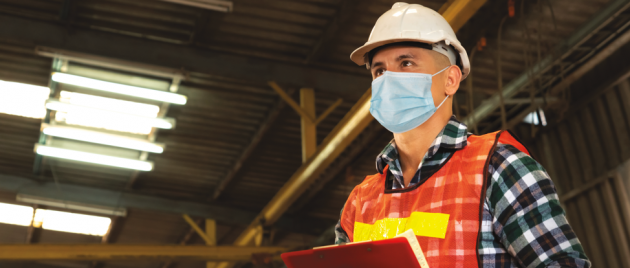
By Steve Ryan
The Ryan Report: Here we go again – An analysis of the impact of COVID-19
Canadian Contractor canadian contractor column covid-19 Steve Ryan The Ryan Report As case counts rise, we may be facing a return of more restrictive infection control measures for coronavirus and the COVID 19 illness it causes. We are already pretty exhausted by what we’ve been through but perhaps by better understanding the reasoning behind those precautions we can be less frustrated and more effective in executing as we face evolving demands.
As case counts rise, we may be facing a return of more restrictive infection control measures for coronavirus and the COVID 19 illness it causes. We are already pretty exhausted by what we’ve been through but perhaps by better understanding the reasoning behind those precautions we can be less frustrated and more effective in executing as we face evolving demands.
What follows is not to offer medical advice or to suggest you stray from the public health guidance in your area. These notes are intended only to help clarify the objectives some of that guidance is aiming for.
First, let’s consider why COVID 19 stands out so starkly from other infection risks. It poses a danger for a number of reasons, but the uncommon feature that makes this virus so hard to contain is that it is a stealthy invader. Other deadly viruses exist but with most of them a person becomes contagious around the time they start to show symptoms. That allows for precautions almost as soon as the patient becomes a risk to others. With COVID 19, most victims are contagious for several days before they notice symptoms. Infections can spread from someone who might never know they were a carrier.
Instinctively we understand that cleaning and sanitizing is an essential part of infection control. But that provides a limited defense against COVID 19 where the primary route of infection is in the air we breath. We cannot control this virus as long as we share the same air, and that demands behaviour changes that really clash with how we need to live.
While the public health initiative is broader and more complex, each precaution we are asked to follow has a specific objective in containing the virus.
Give it fewer targets – stop people from interacting. The lockdown jammed the brakes on our society to prevent interactions as much as possible. Why was that? On March 20 there were just over 1,000 confirmed cases of COVID 19 in Canada. It only took until March 23 for that to double to 2,100. At that rate of compounded growth it would have taken just six weeks for everyone in Canada to become exposed. With runaway infection rates and a poor understanding of what interactions cause new infections, our crisis response was to restrict interactions of all types.
Give it distance – if you must interact, make it hard for the virus to transmit. Social distancing incorporates what we learned along the way about how the virus transmits. The primary route is via the air we exhale. We also learned that the critical concentration for the virus to be infectious in our breath dissipates beyond about two metres. Social distancing acknowledges that since some interactions have to happen, we should maintain a gap that the infection is unlikely to bridge. Perhaps it’s more important to realize that where people get closer, the virus spreads more easily. That, in turn, threatens to re-ignite infection rates that only a lockdown can contain.
Find it early – identify who is contagious and restrict their interactions. Testing is sometimes misunderstood as an infection control tool. The point is not to provide a negative result so you can relax. Testing protects the community when it identifies a positive individual. That alerts them to isolate and prevent the many ongoing contacts they might otherwise carry on with. Contact tracing is an essential companion to testing. Each positive result includes the likelihood that person has been contagious for several days. Any close contact they had in that time could now be contagious and spreading the virus without knowing it.
Presume you are a risk to others. Because none of us can be sure if we are carrying the virus, we owe it to those around us to behave as though we might. For most of us, PPE means wearing a mask and, once again, the public health objective is poorly understood. Those who think a mask is to protect themselves might reasonably feel entitled to take that risk. However, the more critical function for masks is to limit the spread of our own breath (the primary route of transmission, remember).
By understanding the reasons and the limitations of each mitigation strategy, perhaps we can feel less frustrated by them. Recognize that each one has a stand-alone purpose. In other words, to really contribute to the control of COVID 19, we need to follow each one for its own reasons. Doing more of one will not compensate for overlooking another.
Steve Ryan is the founder of MMI Professional Services. MMI is committed to the success of contractors by helping them develop the business and management skills they need . For information on ways to run a better building business contact the writer at steveryan@mmiproservices.com.

Leave a Reply